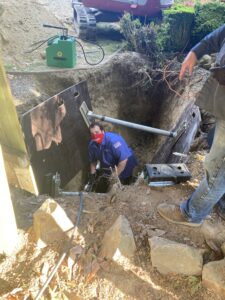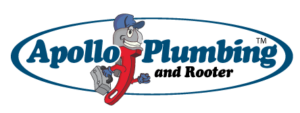 It is common for older homes to contain copper pipes. Unfortunately, leaks can occur at any time. In order to avoid costly damages and expensive utility bills, it is essential to understand the most common copper pipe repair procedures.
It is common for older homes to contain copper pipes. Unfortunately, leaks can occur at any time. In order to avoid costly damages and expensive utility bills, it is essential to understand the most common copper pipe repair procedures.
At Apollo Plumbing, we are proud to deliver top services to clients around Seattle, Washington.
Clamp/Sleeve
Before attempting any type of copper pipe repair, it is advised to identify the leak source and drain the pipes. If there is a small leak present without damage, it is possible to use a repair clamp, also known as a pipe sleeve. By far, this is the most simple type of copper pipe repair procedure. There will be no need for any type of pipe replacement.
To make sure that the repair is effective, choosing a clamp of the proper size is essential. Usually, the size of the pipe is stamped into a visible location. The first step is to clean the area with steel wool or high-grit sandpaper. In order to cover the leak, the clamp can be placed on the damaged location. The final step is to tighten the bolts securely.
Pipe Tape
The next method for copper pipe repair is applying specialty tape. After cleaning the area, it is crucial to assess the size of the hole. If it is more significant than a pinhead, it will be necessary to use putty epoxy to seal the damage.
While the epoxy dries, the tape may be activated by soaking it in water. When it is ready, it can be rolled around the area. It is essential to wrap the tape securely and to layer it. The tape sets quickly, so any air bubbles must be eliminated immediately.
Copper Pipe Repair Replacement
If a large leak is uncovered, pipe repair may not be possible. The replacement may be necessary. This requires a pipe cutter, a round file, a replacement pipe, and a new fitting.
Once the leak is identified, the pipe cutter is used to remove the problem area and approximately an inch of pipe on each side. Once the piece is removed, the remaining pipe should be filed so that the new fitting seals correctly. Next, the new pipe piece must be measured and cut. It may be sweat-soldered into position. If soldering is not an option, it is possible to use a push-connect fitting. Usually, this item is available in most hardware stores.
Having a leak in your plumbing system is never good. When you cannot take care of the problem alone, the experts at Apollo Plumbing can help. For many years, our team has provided fast and friendly service to clients around Seattle. Our plumbers are trained to identify leaks and to perform copper pipe repair or system replacement. To schedule an appointment, contact us today.
FAQs About Copper Pipes
How long do copper pipes last?
Copper pipes typically last between 50 and 70 years. Type L can last 60–80 years, while Type M lasts 20–50 years, depending on water quality, pressure, and installation.
What’s the difference between Type L and Type M copper pipes?
Type L has thicker walls, handles higher pressure, and lasts longer than Type M. Type M is thinner, cheaper, and best for low-pressure indoor use.
Can I use Type M copper for hot water lines?
Yes, but only in low-pressure systems. Type L is more reliable for hot water over time and meets more building code requirements.
How can I tell which type of copper pipe I have?
Look for the color stripe or printed label on the pipe. Type L is marked with blue, and Type M is marked with red.
Do local codes allow Type M copper?
 Some areas allow it, especially for indoor residential plumbing. However, many codes prefer Type L for its strength and durability.
Some areas allow it, especially for indoor residential plumbing. However, many codes prefer Type L for its strength and durability.
Is rigid copper better than flexible copper?
Rigid copper is common for straight runs and stable installs. Flexible copper is easier to install in tight spaces or curved routes. Both have specific use cases.
